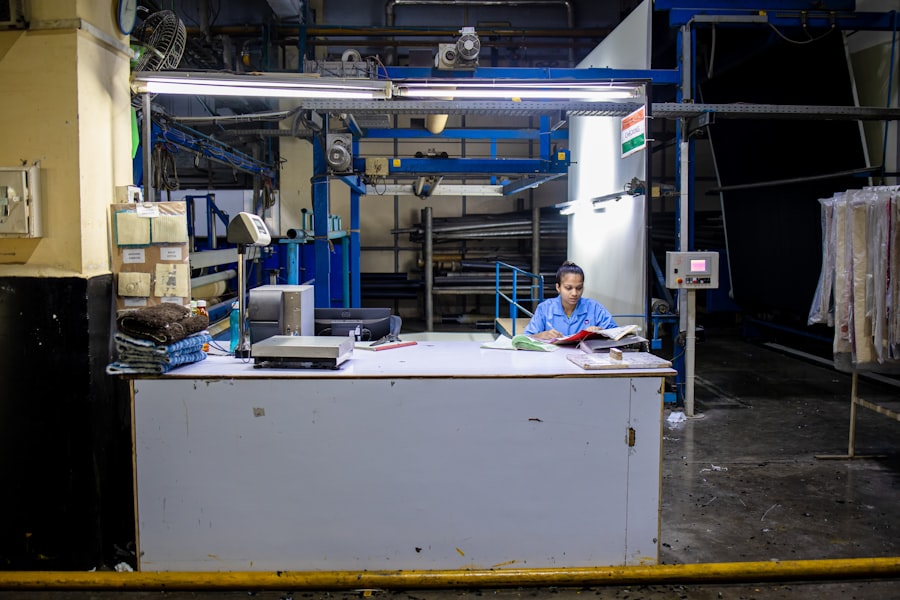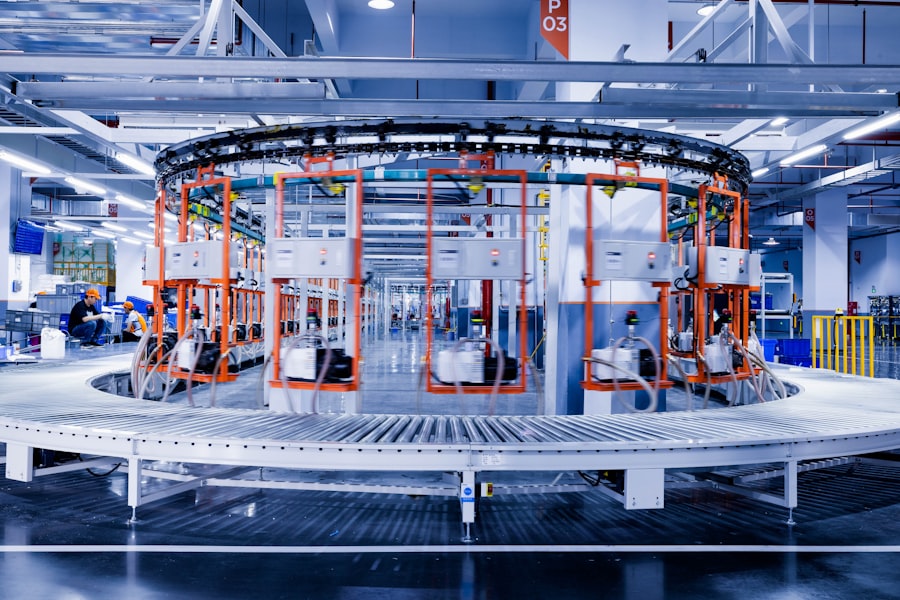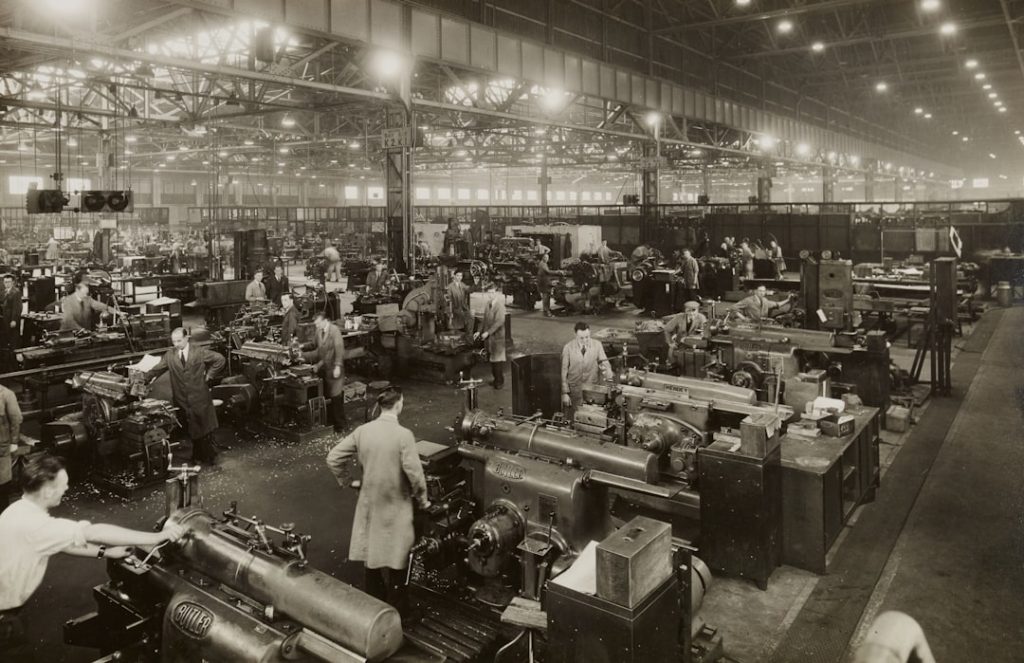Aerospace manufacturing is a highly specialized sector that encompasses the design, production, and assembly of aircraft, spacecraft, satellites, and related systems and equipment. This industry is characterized by its complexity, precision, and stringent regulatory requirements, which are essential for ensuring safety and reliability in air and space travel. The aerospace sector has evolved significantly over the decades, driven by advancements in technology, materials science, and manufacturing processes.
As a result, aerospace manufacturing not only plays a crucial role in the global economy but also serves as a catalyst for innovation across various fields. The aerospace industry is a significant contributor to job creation and economic growth. It encompasses a wide range of activities, from the production of commercial airliners to military aircraft and space exploration vehicles.
The sector is also marked by its collaborative nature, with numerous stakeholders involved, including manufacturers, suppliers, regulatory bodies, and research institutions. This intricate web of relationships fosters an environment where innovation thrives, leading to the development of cutting-edge technologies that enhance performance, safety, and efficiency in aerospace operations.
Key Takeaways
- Aerospace manufacturing is evolving rapidly with technological advancements enhancing production efficiency and quality.
- Additive manufacturing enables complex, lightweight components, reducing material waste and lead times.
- Automation and robotics improve precision, safety, and speed in aerospace production processes.
- Advanced materials and composites contribute to stronger, lighter, and more durable aerospace structures.
- Digital twin technology and Industry 4.0 optimize supply chain management and predictive maintenance for future aerospace manufacturing.
The Impact of Technology on Aerospace Manufacturing
The integration of technology into aerospace manufacturing has transformed traditional practices, leading to increased efficiency and reduced costs. Advanced computer-aided design (CAD) software allows engineers to create intricate designs with precision, enabling rapid prototyping and iterative testing. This technological shift has significantly shortened the product development cycle, allowing manufacturers to bring new aircraft models to market more quickly than ever before.
Moreover, simulation tools enable engineers to test designs under various conditions without the need for physical prototypes, further accelerating the development process. In addition to design improvements, technology has also enhanced manufacturing processes through the adoption of advanced machining techniques and quality control systems. For instance, the use of computer numerical control (CNC) machines has revolutionized the way components are manufactured, allowing for high levels of accuracy and repeatability.
These machines can produce complex geometries that were previously impossible to achieve with traditional methods. Furthermore, the implementation of real-time monitoring systems ensures that any deviations from quality standards are detected early in the production process, minimizing waste and rework.
Additive Manufacturing in Aerospace

Additive manufacturing, commonly known as 3D printing, has emerged as a game-changer in aerospace manufacturing. This technology allows for the layer-by-layer construction of components from digital models, enabling the production of complex geometries that are often lighter and stronger than their traditionally manufactured counterparts. The ability to create intricate designs without the constraints of conventional machining processes opens up new possibilities for optimizing aircraft performance and fuel efficiency.
One notable application of additive manufacturing in aerospace is the production of lightweight components for jet engines. For example, General Electric has successfully utilized 3D printing to manufacture fuel nozzles for its LEAP engine. These nozzles are not only lighter than their traditionally manufactured versions but also feature complex internal cooling channels that enhance performance.
The reduction in weight contributes to improved fuel efficiency, which is a critical factor in the highly competitive airline industry. As additive manufacturing continues to mature, its potential applications in aerospace are expected to expand further, paving the way for innovative designs and enhanced operational capabilities.
Automation and Robotics in Aerospace Manufacturing
| Metric | Description | Typical Value / Range | Impact on Aerospace Manufacturing |
|---|---|---|---|
| Robot Utilization Rate | Percentage of time robots are actively used in production | 70% – 90% | Higher utilization improves throughput and reduces idle time |
| Cycle Time Reduction | Decrease in time to complete manufacturing tasks due to automation | 20% – 50% | Speeds up production and shortens lead times |
| Defect Rate | Percentage of defective parts produced | 0.1% – 0.5% | Automation reduces human error, improving quality |
| Labor Cost Reduction | Decrease in labor costs due to automation | 30% – 60% | Significant cost savings and reallocation of human resources |
| Precision Level | Accuracy of robotic operations in micrometers (µm) | ±10 µm to ±50 µm | Ensures high-quality assembly and machining |
| Automation Penetration | Percentage of manufacturing processes automated | 40% – 70% | Higher penetration leads to greater efficiency and consistency |
| Return on Investment (ROI) Timeframe | Time taken to recover automation investment | 1 – 3 years | Faster ROI encourages adoption of robotics |
| Maintenance Downtime | Percentage of time robots are down for maintenance | 5% – 10% | Lower downtime increases overall equipment effectiveness |
Automation and robotics have become integral components of modern aerospace manufacturing processes. The use of robotic systems enhances precision and efficiency while reducing human error in repetitive tasks. For instance, robotic arms are employed for tasks such as drilling, riveting, and painting aircraft components.
These systems can operate continuously with minimal downtime, significantly increasing production rates while maintaining high-quality standards. Moreover, automation extends beyond physical tasks; it also encompasses data management and analysis. Advanced software solutions enable manufacturers to collect and analyze vast amounts of data generated during production.
This data-driven approach allows for real-time decision-making and process optimization. For example, predictive maintenance algorithms can analyze equipment performance data to anticipate failures before they occur, reducing unplanned downtime and maintenance costs. As automation technologies continue to evolve, their integration into aerospace manufacturing will likely lead to even greater efficiencies and innovations.
Advanced Materials and Composites in Aerospace
The aerospace industry has long been at the forefront of materials innovation, with advanced materials playing a pivotal role in enhancing aircraft performance. Lightweight composites such as carbon fiber reinforced polymers (CFRP) have gained prominence due to their high strength-to-weight ratio and resistance to corrosion. These materials enable manufacturers to produce lighter aircraft structures that improve fuel efficiency while maintaining structural integrity.
One prominent example of advanced materials usage is found in the Boeing 787 Dreamliner, which incorporates approximately 50% composite materials by weight. This extensive use of composites not only reduces the overall weight of the aircraft but also contributes to lower maintenance costs due to their resistance to environmental degradation. Additionally, ongoing research into new materials such as metal matrix composites (MMCs) and thermoplastic composites holds promise for further advancements in aerospace applications.
These innovations are expected to enhance performance characteristics while addressing sustainability concerns within the industry.
Digital Twin Technology in Aerospace Manufacturing

Digital twin technology represents a significant advancement in aerospace manufacturing by creating virtual replicas of physical assets or systems. These digital twins enable manufacturers to simulate real-world conditions and monitor performance throughout the lifecycle of an aircraft or spacecraft. By integrating data from sensors embedded in physical components with advanced analytics, manufacturers can gain insights into operational efficiency and potential issues before they arise.
For instance, Rolls-Royce employs digital twin technology in its engine monitoring systems. By creating digital replicas of its jet engines, the company can analyze performance data in real-time and predict maintenance needs based on actual usage patterns rather than relying solely on scheduled maintenance intervals. This proactive approach not only enhances reliability but also reduces operational costs for airlines by minimizing unscheduled downtime.
As digital twin technology continues to evolve, its applications in predictive maintenance and performance optimization are expected to expand across various segments of aerospace manufacturing.
The aerospace industry operates within a complex global supply chain that requires meticulous coordination among various stakeholders. The advent of Industry 4.0—characterized by the integration of digital technologies into manufacturing processes—has revolutionized supply chain management in aerospace. Technologies such as the Internet of Things (IoT), big data analytics, and blockchain are being leveraged to enhance transparency, traceability, and efficiency throughout the supply chain.
IoT devices enable real-time tracking of components as they move through the supply chain, providing manufacturers with valuable insights into inventory levels and delivery timelines. This visibility allows for better demand forecasting and inventory management, reducing excess stock and associated carrying costs. Additionally, big data analytics can identify patterns and trends within supply chain operations, enabling manufacturers to make informed decisions that optimize logistics and reduce lead times.
Blockchain technology further enhances supply chain integrity by providing a secure and immutable record of transactions between parties involved in the supply chain. This transparency fosters trust among stakeholders while mitigating risks associated with counterfeiting or fraud. As aerospace manufacturers increasingly adopt Industry 4.0 principles, they are likely to experience improved operational efficiencies and enhanced collaboration across their supply chains.
Future Outlook for Aerospace Manufacturing Technology
The future of aerospace manufacturing technology is poised for remarkable advancements driven by ongoing research and development efforts across various domains. As environmental concerns become more pressing, there is a growing emphasis on sustainable practices within the industry. Innovations such as electric propulsion systems and alternative fuels are being explored to reduce carbon emissions associated with air travel.
Furthermore, advancements in artificial intelligence (AI) are expected to play a transformative role in aerospace manufacturing processes. AI algorithms can analyze vast datasets to optimize design parameters or predict maintenance needs with unprecedented accuracy. This capability will not only enhance operational efficiency but also contribute to improved safety outcomes.
As we look ahead, collaboration between industry stakeholders will be crucial in driving innovation forward. Partnerships between manufacturers, research institutions, and government agencies will facilitate knowledge sharing and accelerate the development of new technologies that address emerging challenges within the aerospace sector. The convergence of these trends suggests a future where aerospace manufacturing is not only more efficient but also more sustainable and responsive to the evolving needs of society at large.




